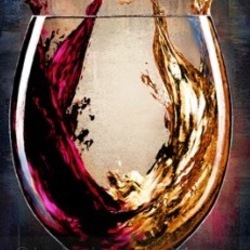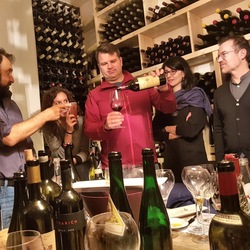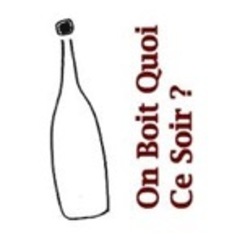Mont St Michel
Domaine Michel Magnien
Les Millandes Morey St. Denis 1er Cru Pinot Noir 2008
A brooding, mysterious wine, this is a knock out Pinot noir. — 8 years ago
Château Clos L'Eglise
Pomerol Merlot - Cabernet Franc Blend 2005
3000th post. 🎉 On the nose; sweet, lush; black cassis, liqueur notes, sweet tarry notes, rich, lush; blackberries, dark cherries, black plum, plum, caramel, mocha, caramel, baking spices, warm, moist, rich, dark soils and fresh dark florals. The body is M and the tannins are round and soft. She is a beauty. Ripe, rich; blackberries, black plum, plum, dark cherries, black raspberries & poached strawberries. liqueur notes, sweet tarry notes, dark chocolate, mocha, caramel, baking spices, menthol, warm, moist dark earth, soft leather, dry rock powder, sweet black tea, fresh violets, dark, red florals, perfect round acidity and a rich, round, elegant fruit driven finish that last and lasts. Photos of; Clos E'Lgise and estate vines, signage, Helen Garcin-Leveque and her husband Patrice Leveque and their barrel cellar. Producer history and notes...Clos L’Eglise is one of the older chateaux in Pomerol dating back to the 18th century. The same time the farmhouse that is still in use was constructed. At the time, Chateau Clos L’Eglise was a larger estate. It once had been apart of the Gombaude Guillot. Eventually the estate was split in half. On one side of the street, you had Chateau Clos l’Eglise; which was owned by the Rouchut family. Across the street sat Chateau Clos l’Eglise-Clinet, which was owned by the Mauleon family. After awhile, Clos l’Eglise Clinet eventually changed its name to Chateau l’Eglise Clinet which also simultaneously gave birth to what we know today as Clos L’Eglise. While the wines are now produced by Helene Garcin that was not always the case with Clos L’Eglise. At one point, the estate produced wines under a leasing arrangement held by the Rouchut family. The modern era of Clos L’Eglise began in 1975, when the property facilities were all redesigned and modernized by the Moreau family. The Moreau’s also owned Chateau Plince. The old, non temperature controlled wood tanks were replaced by stainless steel. The vineyards were also expanded. Instead of buying more vines, the owners simply planted land that was being used as a pasture. Imagine now, Pomerol land being used to feed cattle. In the past, the property was planted with a much larger percentage of Cabernet Sauvignon, near 20%. All the Cabernet Sauvignon vines were eventually ripped out and replaced by Merlot. The next step of it's evolution took place in 1997 when the Right Bank estate was sold to Sylvaine Garcin Cathiard by the Moreau family. If the Cathiard name sounds family, she is the sister of Daniel Cathiard, the owner of Chateau Smith Haut Lafitte. The sale set a new benchmark price for Pomerol when it sold for 12 million Euros! Today that price would be laughable! Prior to 2000, that was considered a huge price for Pomerol. Further investment was needed to replace the aging concrete vats and again modernize the facilities. In fact, the first vintage of Clos L’Eglise made by Helene Garcin was produced at Haut Bergey in Pessac Leognan. Helene Garcin also manages two estates in St. Emilion, Chateau Barde Haut, Chateau Poesia (Mendoza, Argentina) and Branon, which is situated in Pessac Leognan. Helene Garcin was put in charge of the property. She hired Michel Rolland as a consultant and a complete renovation of the facilities took place. Michel Rolland was eventually replaced by Alain Raynaud. Starting with the 2015 vintage, Thomas Duclos recently replaced Alain as the consultant. Their property is nearly 6 hectares. L’Eglise soils are rich clay, gravel and iron. It's located on a sloping hill near Chateau Clinet, Chateau L’Eglise Clinet and Chateau Trotanoy. Clos L’Eglise is planted to 80% Merlot and 20% Cabernet Franc. On average, the vines are 35 years of age. There is one old parcel of Cabernet Franc that was planted in the 1940’s. Vinification of Clos L’Eglise takes place in 55 hectoliter, insulated, stainless steel tanks. The new steel tanks replaced the oak vats in 2012. Malolactic fermentation takes place in barrel. Clos L’Eglise is aged in 100% new French oak for between 16 and 18 months. The property also has a second wine, Esprit de L’Eglise. On average, about 1,200 cases of Clos L’Eglise are produced every year. — 8 years ago

Jean-Michel Gerin
Saint-Joseph Syrah 2013
Really enjoyed this. Everything I have got from Rezin at the SAQ has been good — 9 years ago
Jean-Michel Guillon
La Riotte Morey St. Denis 1er Cru Pinot Noir 2008
2008 drinking very well today. Pretty fruit. — 10 years ago
Château Michel de Vert
Lussac-St. Émilion Merlot Cabernet Sauvignon 2012
Very smooth. 2012 vintage. — 10 years ago
Michel Picard
Clos St. Jean Chassagne-Montrachet 1er Cru Chardonnay 2006
Solid for the price point. Right amount of oak, higher acidity. Some oxidation at first but blew off and opened into a really nice and easy white. — 11 years ago
Domaine Michel Magnien
Les Chaffots Morey St. Denis 1er Cru Pinot Noir 2004
Ink pen, dark fruits, black current, violet, savory spices... leather, tobacco...lovely yet slightly grippy finish. — 12 years ago
Château Tour Saint-Christophe
Saint-Émilion Red Bordeaux Blend 2015
The 2015 Tour Saint Christophe was impressive from barrel and is equally impressive from bottle. Red cherry/raspberry jam, exotic spice and floral notes fill out in a sumptuous, racy Saint-Émilion loaded with personality. Even with all of its overtness, the 2015 retains a good bit of freshness as well. This is a fabulous showing from a property that continues to improve under the stewardship of owner Peter Kwok and consulting winemaker Michel Rolland. (Antonio Galloni, Vinous, Feb 2018) — 8 years ago
André-Michel Brégeon
Gorges Muscadet de Sèvre-et-Maine Melon de Bourgogne 2013
3 November 2017. St. Anselm, Brooklyn, NY. — 8 years ago
Domaine Michel Goubard et Fils
Mont Avril Cote Chalonnaise Bourgogne Pinot Noir 2014
Light and very. Drinkable. — 9 years ago
Sylvie Esmonin (Michel et Fille)
Clos St. Jacques Gevrey-Chambertin Pinot Noir 2013
Bodega DiamAndes
Clos de los Siete Malbec Blend 2013
Michel Rolland’s Malbec-based blend from the cooler southern end of Mendoza leads with aromas of currant, licorice, violet and bitter chocolate. Plush flavors of dark berries and spices deliver outstanding breadth and fruit sweetness, while the tannins are suave and seamless. (ST) — 9 years ago
Château Phélan Ségur
Saint-Estèphe Red Bordeaux Blend 2007
If my research is correct, the 2007 vintage of Phélan Ségur is pre-consultation with Michel Rolland. Parker routinely scored these wines in the mid-to-lower 80s, clearly he didn't care for them. The 2007 is old-school Saint-Estèphe, with brooding aromas of coffee grounds, black currents, barnyard funk and freshly overturned soil. Fine tannins on the attack, tinged with cedar, and smartly capped off with dried herbs and minerals. For its price, I found it to be enjoyable. — 10 years ago
Château Rolland-Maillet
St. Émilion 2010
Thank you Michel Roland — 11 years ago
Math. Jos. Clüsserath
Klusserather St. Michel Auslese Riesling 2003
Klassiker Riesling Auslese. — 11 years ago
Léo de la Gaffelière
Saint-Émilion Red Bordeaux Blend 2011
Le Mont
Zachte lekkere wijn — 11 years ago
Château Cos d'Estournel
Les Pagodes de Cos Saint-Estéphe Red Bordeaux Blend 2005
Is there anything better than Ribeye & Claret? From my perspective, no. This is the second wine from one of more prestigious Chateaus in St. Estephe. Bordeaux rule number 2, buy the hell out of good producers second wines in very good vintages, like 2005. You’ll get great wines at more affordable prices. Providing, you exercise patience; which is rule number 1. Decanted for 3 plus hours. On the nose, ripe; blackberries, dark cherries, black raspberries, baked strawberries, black plum & cherries pull up the rear. Incense, herbaceous character, anise, scorched dark earth, burnt ambers, anise, baking spices dominated by vanilla, black tea, black cherry cola, loamy dry soils, dry & fresh red florals with violets for days. It’s in a great phase with many years ahead. The body is full and round. The texture has you wanting more. It’s velvety and ripe. Tannins soft and powdery, around 65-70 resolved. The fruits are ripe & ruby...showing the excellence of the 05 vintage. Blackberries, dark cherries, black raspberries, baked strawberries, black plum & cherries pull up the rear. Incense, herbaceous character, anise, scorched dark earth, dry stones, leather, cigar with ash, burnt ambers, anise, baking spices dominated by vanilla, black tea, black cherry cola, loamy dry soils, dry & fresh red florals with violets for days. The acidity is dead on. The length, structure, length & balance is harmonizing like America on the album, “ Horse with No Name.” The long finish is; ruby, rich, elegant, round, beautiful and lasts a minute plus. Beautiful wine. 9.4 with the steak. 9.2 on its own. Photos of; Chateau Cos d’ Estournel, hosting/tasting area, private wine stock and barrel cellar. Producer notes and history...Chateau Cos d’Estournel has a long history in the appellation of St. Estephe. Louis Gaspard d’Estournel, gave his name to the estate after founding it in 1811. It only took a few years before Chateau Cos d’Estournel became famous with wine lovers and royalty all over the world. In the early days, the wines of Cos d’Estournel were not sold through the Negociant system. The owner preferred selling his wine directly to his customers. In fact, Chateau Cos d’Estournel was exported to numerous countries across the globe, with a large portion of the production being sold to India. It was that connection to India that inspired much of the unique, east Indian design we see at Cos d’Estournel today. Chateau Cos d’Estournel was one of the first Chateaus to bottle, label and sell their own wine. This practice continued until the death of Louis Gaspard d’Estournel in 1852. After his death, the estate was purchased by an owner that sold their wines on the Place de Bordeaux, using the negociant system. If the Chateau had not been selling their wines through the negociant system, it would never have been included in the 1855 Classification! Chateau Cos d’Estournel was sold to the Charmolue family, the owners of the neighboring Chateau Montrose. They continued to own the estate until 1917, when it was bought by Fernand Ginestet. The purchase was the next major step in the development of Cos d’Estournel. The next era in the development of Chateau Cos d’Estournel took place in 2000, when Chateau Cos d’Estournel was bought by Michel Reybier, who made his fortune in the food industry. Michel Reybier hired the son of Bruno Prats, Jean-Guillaume Prats to manage Cos d’Estournel. Things improved with the efforts of Jean-Guillaume Prats who helped design the most modern wine making facilities in the entire Bordeaux wine making appellation at the time. A complete renovation of Cos d’Estournel took place in the winemaking facilities and cellars. The wine making facilities are completely modern, using 100% gravity. On October 15, 2012, Jean Guillaume Prats announced he was leaving Chateau Cos d’Estournel to join LVMH. Jean Guillaume Prats was replaced by Aymeric de Gironde. Following the departure of Aymeric de Gironde in 2017, the owner, Michel Reybier took over managing the estate. In 2018, the estate released COS100, produced from their oldest Merlot vines that were 100 years of age. It was limited in production to a 100 Jeroboams, (3 litres) and 10 Balthazars (12 litres) and a few other sizes were produced from only 2 barrels of wine. The proceeds from COS100 go to the charity, Elephant Family, that is devoted to protecting and nurturing Asian elephants in their own, natural habitat. Cos d’Estournel’s new cellar is a joint reflection by the technical team, the architect Jean-Michel Wilmotte and Jean Guillaume Prats. It’s a marvel blend of simplicity and modern technology. Cos d’Estournel is unique to Bordeaux and the rest of world. What makes this special is that the cellars of Cos d’Estournel are entirely operated by gravity. There are no pumps of any kind to force the wine. The purpose is to allow a gentleness to the wine and improve its purity allowing for expression of their special terroir. It set a new benchmark for cellars not only in the Left Bank, but in all of Bordeaux. The new cellars at Chateau Cos d’Estournel include 72 isothermal cone shaped stainless steel vats. The vats are specifically designed for thermal inertia. The 72 vats have a wide range of capacities to correspond with the needs of each parcel of vines. The vats range in size from as small as 19 hectoliters all the way up to 115 hectolitres. 12 of the smaller vats that are designed to handle between 19 and 60 hectoliters that have two levels in each vat. In other words, this offers the technical equivalent of 24 separate vats. Each of the vats are double lined, which allows for more exact and temperature control. None of the vats use interior heat coils. Perhaps the most inventive part of the cellars is the four 100 hectoliter lift tanks or wine elevators that replace the pumps used in the traditional pumping over and racking off processes, which introduce air and often destabilize the marc. From the moment the grapes arrive, everything travels by the flow of gravity. Jean Guillaume Prats called this process a pumpless, pump over. What takes place is, the wine is released from the main vat where the skins remain. By gravity, the juice is then moved into smaller vats which are on wheels. These small vats are sent to the glass elevators where they are moved up one floor and returned back into the vat by gravity to cover the skins. At this point, the process is still unique to Chateau Cos d’Estournel. The wine production of Cos d’Estournel is labor intensive starting the moment the grapes enter their new facility. The berries travel through a tunnel that instantly lowers the temperature of the fruit to 3-5 degrees Celsius. This sudden chilling stops the loss of juice while also slowing oxidation. Next, the grapes are cold macerated at 7-9 degrees Celsius for about a week. Pump overs are done by gravity recycling. The juice from the top of the vat moves to the bottom of the vat entirely by gravity. The fermentation takes place at low temperatures to avoid over extraction or harsh tannins. The 91 hectare vineyard of Chateau Cos d’Estournel is planted to 65% Cabernet Sauvignon, 33% Merlot, 1% Cabernet Franc and 1% Petit Verdot. The vineyard is located close to the border of Pauillac and Saint Estephe at the southern tip of the Saint Estephe appellation. The vineyard has cultivated 84 hectares of vines. Even though the vineyard has been expanded over the years, the grape varietals planted here have remained consistent. The vineyard, located on the hill of Cos, has gentle elevations of up to 20 meters. On average, the vines are 35 years of age. However, the estate has very old Merlot vines as well, which date back more than 100 years. Part of the terroir is situated on the hill of Cos, which is at a high elevation for the Medoc at 20 meters. Cos d’Estournel is translated from old Gascon speech; which means the hill of pebbles. It describes the terroir along with clay, gravel, sand and limestone soil. However, there is a unique aspect to the soil at Cos d’Estournel, as you find more gravel and less clay here than you do at other neighboring vineyards. Because the fruit is grown close to the Atlantic ocean in a cool climate, Cos d’Estournel is often among the last of the properties in the Medoc to harvest. The vineyard is managed by teams and each team member is given 45,000 vines to look after. The vineyard, which is almost one large block, can be further divided into 72 separate parcels. — 8 years ago

Domaine Michel Cheveau
Sur le Mont Mâcon Solutré-Pouilly Chardonnay 2013
Very drinkable but not terribly notable. — 10 years ago
Domaine du Chalet Pouilly
Saint-Véran Chardonnay 2013
Saint-Véran 2013 - Domaine du Chalet Pouilly
C'est dans le village de Solutré-Pouilly, situé dans la région du Mâconnais en Bourgogne, que la famille Plumet réalise de la magie au Domaine du Chalet Pouilly. Ce domaine ne se revendique d'aucun mouvement, ni d'aucune communauté. Ils font du vin. Depuis 1850. Autant dire que le temps et le respect des pratiques de cette période font partie intégrante de la culture du domaine et qu'elles l'ont toujours été.
Dégustons : notre superbe victime se nomme Saint-Véran 2013 et autant le dire de suite, ce 100% Chardonnay balance : Waouh! Waouh! Waouh! (3 fois)
Des vignes d'une cinquantaine d'années produisent ce jus envoutant, issu d'un élevage en cuve inox pendant 8 mois environ.
La couleur est paille, le nez floral avec un soupçon de pain légèrement beurré. En bouche, la précision est phénoménale. Le vin est superbement équilibré et rien ne semble laissé au hasard. Finesse et délicatesse s'allient sur une minéralité citronnée qui impose une longueur fort agréable. Ce vin coule avec tant d'aisance et de délicatesse qu'on prend alors conscience que la bouteille du doux breuvage est déjà vide ;)
Aie !
Domaine du Chalet Pouilly : une priorité dans votre vie
La cachette est ici :
La P’tite cave
Michel Thievin
7 boulevard de port royal
75013 Paris
0147071091
ENGLISH /
English friends is here what you need to know, description taken directly from domain's website, but true:
TASTING:
Light yellow (thanks to the old vineyards - 50 years old) colour and an elegant fruity scent. Flavors of fresh buttered bread with
floral fragrances as well as a sweet aroma of ripe fruits and a roasted hint are characteristic of this wine.
PHILOSOPHY
Domaine du Chalet Pouilly's philosophy is to allow nature to express itself through the vinification process in order to create highquality, richflavored wines with a rustic touch. Domaine du Chalet Pouilly practices traditional winegrowing methods, respecting the "terroir" in order to bring out the superior flavors of its quality wines.
Un grand merci à nos amis Nadège et @n0styler
#vin #vinlibre #vinnature #vinnaturel #vinsauvage #vinslibres #wine #wineporn #winelover #wineaddict #winestagram #naturalwine #winetasting #wineoftheday #france #chardonnay #bourgogne
— 11 years ago
Château Canon St.-Michel
Canon-Fronsac Red Bordeaux Blend 2008
No comment — 12 years ago






















Sam Friedland
Nice fruit! — 7 years ago